Do you have a question about the Toyota corolla 1996 and is the answer not in the manual?
Visual guide to the vehicle's dashboard layout and controls.
Details the gauges, meters, and warning lights on the instrument panel.
Explains the meaning of various warning and indicator lights on the dashboard.
Information on using master and subkeys, and key number plate.
Instructions for locking and unlocking vehicle side doors using the key.
How to operate power windows, including auto function and lock button.
Steps for opening and closing the trunk lid from inside and outside.
How to open and close the back door and hood of the vehicle.
How to set and operate the vehicle's anti-theft system.
Instructions for opening and closing the fuel filler door and cap.
Guide to opening, closing, and tilting the electric sunroof.
How to adjust front seats and safety precautions during adjustment.
Instructions for folding down the rear seatbacks for increased cargo space.
How to adjust head restraints for maximum effectiveness and safety.
Guidelines for proper seat belt use and safety recommendations.
Information on how the Supplemental Restraint System airbags function and deploy.
Guidance on installing child restraint systems and safety considerations.
How to adjust steering wheel and rear-view mirrors for optimal visibility.
Operation of headlights, turn signals, wipers, washers, and defogger.
Reading vehicle gauges and understanding service reminder indicators.
How to use the ignition switch and operate the transmission.
Guidelines for shifting gears and recommended shifting speeds.
Operation of parking brake and cruise control system for driving.
Advice on using the car radio and cassette player.
How to use the climate control system for heating and cooling.
Operation of clock, lighter, glovebox, and other interior features.
Guidelines for the initial driving period to ensure vehicle longevity.
Information on required fuel type, octane rating, and additives.
Advice on vehicle registration and fuel availability abroad.
Explanation of the catalytic converter's function and precautions.
Safety warnings related to engine exhaust fumes and system integrity.
Understanding normal engine oil consumption and its causes.
Explanation of the brake system, including tandem master cylinder and booster.
How to identify worn brake pads by listening for warning noises.
Tips for safely stowing luggage to maintain vehicle balance and prevent shifting.
Location and importance of the vehicle's unique identification number.
Information about labels designed to deter vehicle theft and aid recovery.
Warnings against modifying suspension and chassis components.
Information on summer tires, all-season tires, and their performance characteristics.
Essential checks to perform around the vehicle before starting the engine.
Step-by-step guide for starting the engine, including manual and automatic transmissions.
Advice for driving in adverse conditions like crosswinds, hills, and wet roads.
Essential advice for driving safely in cold weather and snow.
Important considerations and safety precautions when towing a trailer.
Tips to improve fuel economy and extend vehicle life through proper driving habits.
Steps to diagnose and resolve issues when the vehicle fails to start.
What to do if the engine stalls while the vehicle is in motion.
Steps to take if the engine coolant temperature indicates overheating.
Detailed instructions for changing a flat tire, including safety precautions.
Recommended methods and precautions for towing the vehicle.
How to use the shift lock override button if the selector lever is stuck in Park.
What to do if you lose your vehicle keys or lock them inside.
Causes of corrosion and guidelines to prevent it, especially in harsh environments.
Proper methods for washing and waxing the vehicle's exterior.
Instructions for cleaning interior surfaces like carpets, vinyl, and windows.
Importance of scheduled maintenance for vehicle performance and warranty.
Regular checks for various vehicle components, inside and outside.
Clues and symptoms indicating potential service or repair needs.
Identification of key components in the engine bay for maintenance.
Diagrams showing the location of fuse boxes and individual fuses.
Essential safety measures to follow when performing vehicle maintenance yourself.
List of parts and tools needed for common DIY maintenance tasks.
How to correctly check and add engine oil to maintain the proper level.
How to check the coolant level and add coolant if necessary.
How to check the brake fluid level and add fluid if low.
How to check and add power steering fluid to the reservoir.
Importance of proper tire pressure and how to check it accurately.
How to check tire tread wear and replace tires when necessary.
How and why to rotate tires to equalize wear and extend life.
Guidance on selecting and installing snow tires and chains for winter driving.
Considerations for replacing vehicle wheels, including size and load capacity.
Specific care and precautions for maintaining aluminum wheels.
How to check battery fluid levels, hydrometer readings, and exterior condition.
Safety measures and procedures for recharging the vehicle battery.
How to check for blown fuses and replace them correctly.
Instructions for refilling the windshield washer fluid reservoir.
Step-by-step instructions for replacing various exterior and interior light bulbs.
Physical dimensions and weight ratings for sedan and wagon models.
Technical data for the engine, including bore, stroke, displacement, and spark plugs.
Details on fuel type, octane rating, and fuel tank capacity.
Specifications for fluids, belts, and engine lubrication.
Information on tire sizes, pressure, and wheel nut torque.
A listing of all fuses, their amperage, and the systems they protect.
How U.S. owners can report vehicle safety defects to the National Highway Traffic Safety Administration.
Understanding the DOT grading system for tires: Treadwear, Traction, and Temperature.
Visual guide to the vehicle's dashboard layout and controls.
Details the gauges, meters, and warning lights on the instrument panel.
Explains the meaning of various warning and indicator lights on the dashboard.
Information on using master and subkeys, and key number plate.
Instructions for locking and unlocking vehicle side doors using the key.
How to operate power windows, including auto function and lock button.
Steps for opening and closing the trunk lid from inside and outside.
How to open and close the back door and hood of the vehicle.
How to set and operate the vehicle's anti-theft system.
Instructions for opening and closing the fuel filler door and cap.
Guide to opening, closing, and tilting the electric sunroof.
How to adjust front seats and safety precautions during adjustment.
Instructions for folding down the rear seatbacks for increased cargo space.
How to adjust head restraints for maximum effectiveness and safety.
Guidelines for proper seat belt use and safety recommendations.
Information on how the Supplemental Restraint System airbags function and deploy.
Guidance on installing child restraint systems and safety considerations.
How to adjust steering wheel and rear-view mirrors for optimal visibility.
Operation of headlights, turn signals, wipers, washers, and defogger.
Reading vehicle gauges and understanding service reminder indicators.
How to use the ignition switch and operate the transmission.
Guidelines for shifting gears and recommended shifting speeds.
Operation of parking brake and cruise control system for driving.
Advice on using the car radio and cassette player.
How to use the climate control system for heating and cooling.
Operation of clock, lighter, glovebox, and other interior features.
Guidelines for the initial driving period to ensure vehicle longevity.
Information on required fuel type, octane rating, and additives.
Advice on vehicle registration and fuel availability abroad.
Explanation of the catalytic converter's function and precautions.
Safety warnings related to engine exhaust fumes and system integrity.
Understanding normal engine oil consumption and its causes.
Explanation of the brake system, including tandem master cylinder and booster.
How to identify worn brake pads by listening for warning noises.
Tips for safely stowing luggage to maintain vehicle balance and prevent shifting.
Location and importance of the vehicle's unique identification number.
Information about labels designed to deter vehicle theft and aid recovery.
Warnings against modifying suspension and chassis components.
Information on summer tires, all-season tires, and their performance characteristics.
Essential checks to perform around the vehicle before starting the engine.
Step-by-step guide for starting the engine, including manual and automatic transmissions.
Advice for driving in adverse conditions like crosswinds, hills, and wet roads.
Essential advice for driving safely in cold weather and snow.
Important considerations and safety precautions when towing a trailer.
Tips to improve fuel economy and extend vehicle life through proper driving habits.
Steps to diagnose and resolve issues when the vehicle fails to start.
What to do if the engine stalls while the vehicle is in motion.
Steps to take if the engine coolant temperature indicates overheating.
Detailed instructions for changing a flat tire, including safety precautions.
Recommended methods and precautions for towing the vehicle.
How to use the shift lock override button if the selector lever is stuck in Park.
What to do if you lose your vehicle keys or lock them inside.
Causes of corrosion and guidelines to prevent it, especially in harsh environments.
Proper methods for washing and waxing the vehicle's exterior.
Instructions for cleaning interior surfaces like carpets, vinyl, and windows.
Importance of scheduled maintenance for vehicle performance and warranty.
Regular checks for various vehicle components, inside and outside.
Clues and symptoms indicating potential service or repair needs.
Identification of key components in the engine bay for maintenance.
Diagrams showing the location of fuse boxes and individual fuses.
Essential safety measures to follow when performing vehicle maintenance yourself.
List of parts and tools needed for common DIY maintenance tasks.
How to correctly check and add engine oil to maintain the proper level.
How to check the coolant level and add coolant if necessary.
How to check the brake fluid level and add fluid if low.
How to check and add power steering fluid to the reservoir.
Importance of proper tire pressure and how to check it accurately.
How to check tire tread wear and replace tires when necessary.
How and why to rotate tires to equalize wear and extend life.
Guidance on selecting and installing snow tires and chains for winter driving.
Considerations for replacing vehicle wheels, including size and load capacity.
Specific care and precautions for maintaining aluminum wheels.
How to check battery fluid levels, hydrometer readings, and exterior condition.
Safety measures and procedures for recharging the vehicle battery.
How to check for blown fuses and replace them correctly.
Instructions for refilling the windshield washer fluid reservoir.
Step-by-step instructions for replacing various exterior and interior light bulbs.
Physical dimensions and weight ratings for sedan and wagon models.
Technical data for the engine, including bore, stroke, displacement, and spark plugs.
Details on fuel type, octane rating, and fuel tank capacity.
Specifications for fluids, belts, and engine lubrication.
Information on tire sizes, pressure, and wheel nut torque.
A listing of all fuses, their amperage, and the systems they protect.
How U.S. owners can report vehicle safety defects to the National Highway Traffic Safety Administration.
Understanding the DOT grading system for tires: Treadwear, Traction, and Temperature.
| Brand | Toyota |
|---|---|
| Model | corolla 1996 |
| Category | Automobile |
| Language | English |
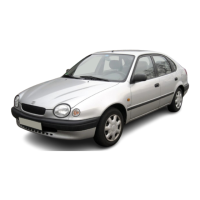
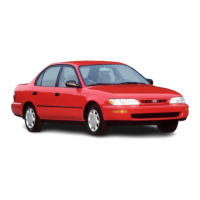
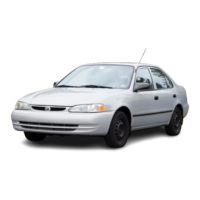
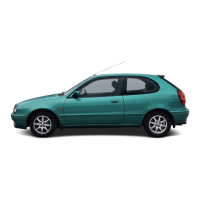







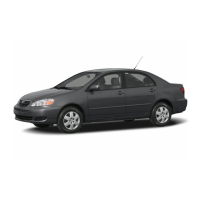
